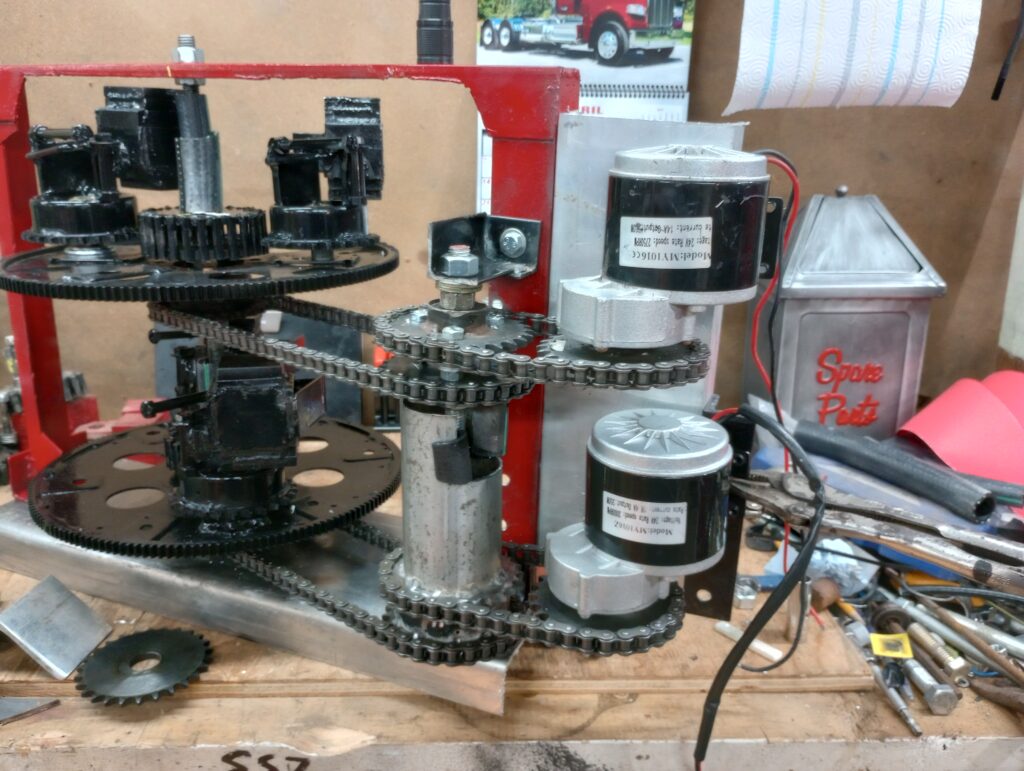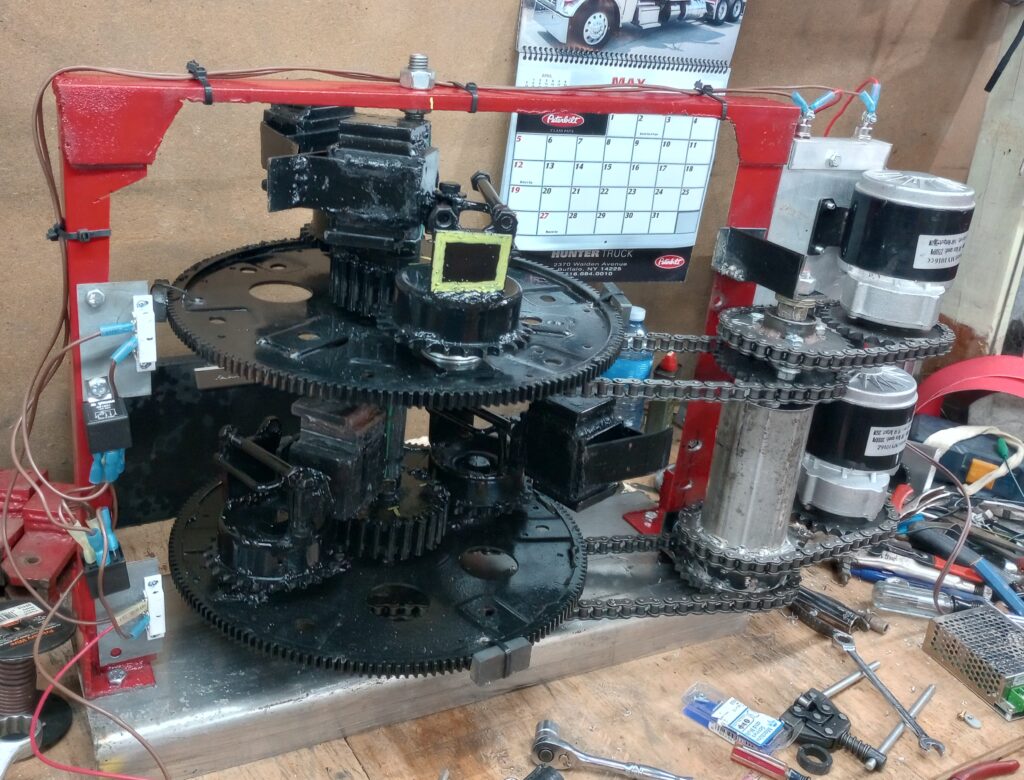The PIE.xx or PIExx is the newest iteration of the original PIE which was based on the work of Roy Thornson. This build is using the masses, or weights, from the PIE 4 series as they are the most advanced masses built to date with their “dead-blow” properties. It is using the “stacked” or “double-decker” design of the PIE 2 series for the smaller footprint and for the implementation of some new features. It is using the non-contact switches from the PIE 4 series as they are simple and inexpensive to interface with multiple speed controller designs.
The newest and most radical feature added to the mix is one I am calling the “Quantified Backlash Drive” or QBD.
The QBD: The QBD is a 2 input/output “jackshaft” that allows partial uncoupling of the two while ensuring the uncoupled halves stay within a specified range or have a specific backlash between them. The entire purpose of this is to allow the two rotating assemblies (“wheels”) to use separate drive motors each with its own separate SDC but not allow the two wheels to get out of their approximate 90 degree synchronized relative positions.
Premise: The need for the QBD stems from wanting to have additional pulses per revolution (ppr) which will make the end-user feel less pulsations because they are much closer together. Previous attempts at having more than 2 ppr yielded no stand-alone thrust. Using 4 ppr, thrust was measured as an aid to propulsion for a vehicle with a large enough mass to absorb much of the pulsations. When dropping the ppr to 2 ppr, self-propulsion was achieved without the need for as much overall vehicle mass. Note: Some overall mass is still required to absorb reversion pulses.
The reason for the lack of self-propulsion is the interaction of pulses and the requirements of the SDCs. The SDCs add more than a speed boost through part of each rotation, they add a momentary deceleration when the mass nears apex causing the mass to impact its stop with much more force. This is incredibly important and cannot be done if there are other masses needing to accelerate at the same time. This makes the SDC combined with the QBD a truly operational “acceleration and deceleration” mechanism!
The new Quantified Backlash Drive being set up.
The SDC & QBD Ready for Testing.

